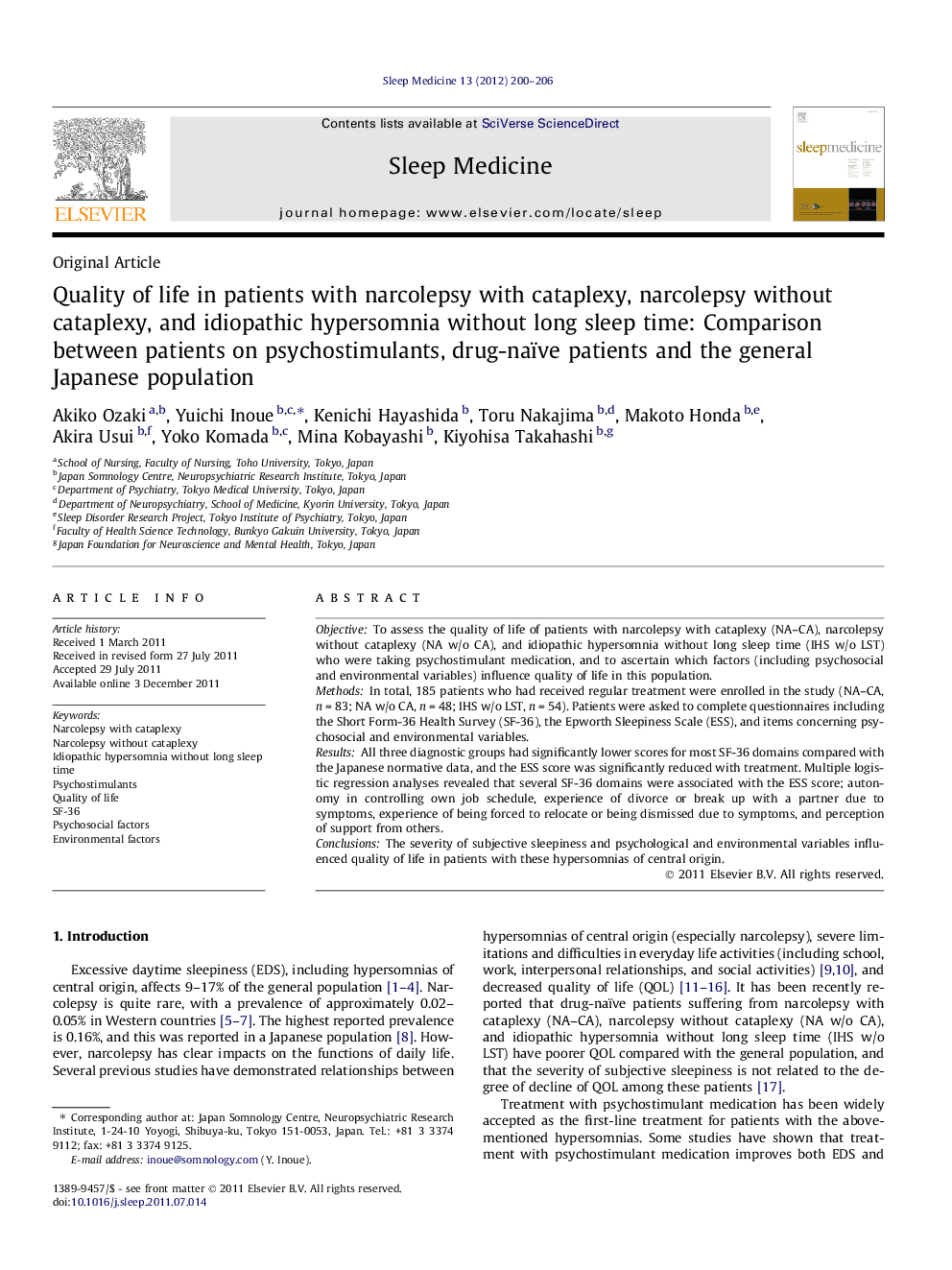| Article ID | Journal | Published Year | Pages | File Type |
|---|---|---|---|---|
| 3176653 | Sleep Medicine | 2012 | 7 Pages |
ObjectiveTo assess the quality of life of patients with narcolepsy with cataplexy (NA–CA), narcolepsy without cataplexy (NA w/o CA), and idiopathic hypersomnia without long sleep time (IHS w/o LST) who were taking psychostimulant medication, and to ascertain which factors (including psychosocial and environmental variables) influence quality of life in this population.MethodsIn total, 185 patients who had received regular treatment were enrolled in the study (NA–CA, n = 83; NA w/o CA, n = 48; IHS w/o LST, n = 54). Patients were asked to complete questionnaires including the Short Form-36 Health Survey (SF-36), the Epworth Sleepiness Scale (ESS), and items concerning psychosocial and environmental variables.ResultsAll three diagnostic groups had significantly lower scores for most SF-36 domains compared with the Japanese normative data, and the ESS score was significantly reduced with treatment. Multiple logistic regression analyses revealed that several SF-36 domains were associated with the ESS score; autonomy in controlling own job schedule, experience of divorce or break up with a partner due to symptoms, experience of being forced to relocate or being dismissed due to symptoms, and perception of support from others.ConclusionsThe severity of subjective sleepiness and psychological and environmental variables influenced quality of life in patients with these hypersomnias of central origin.
